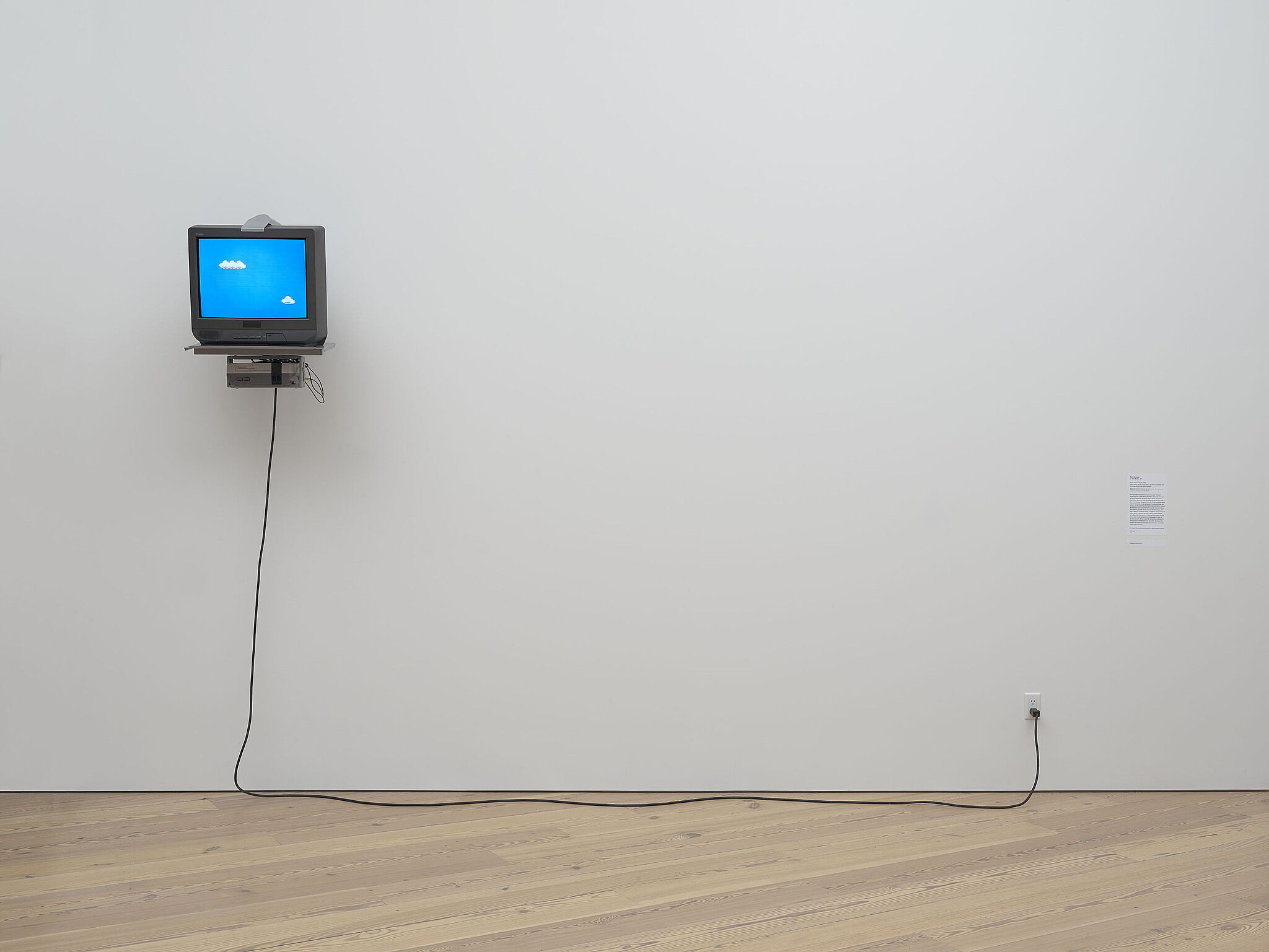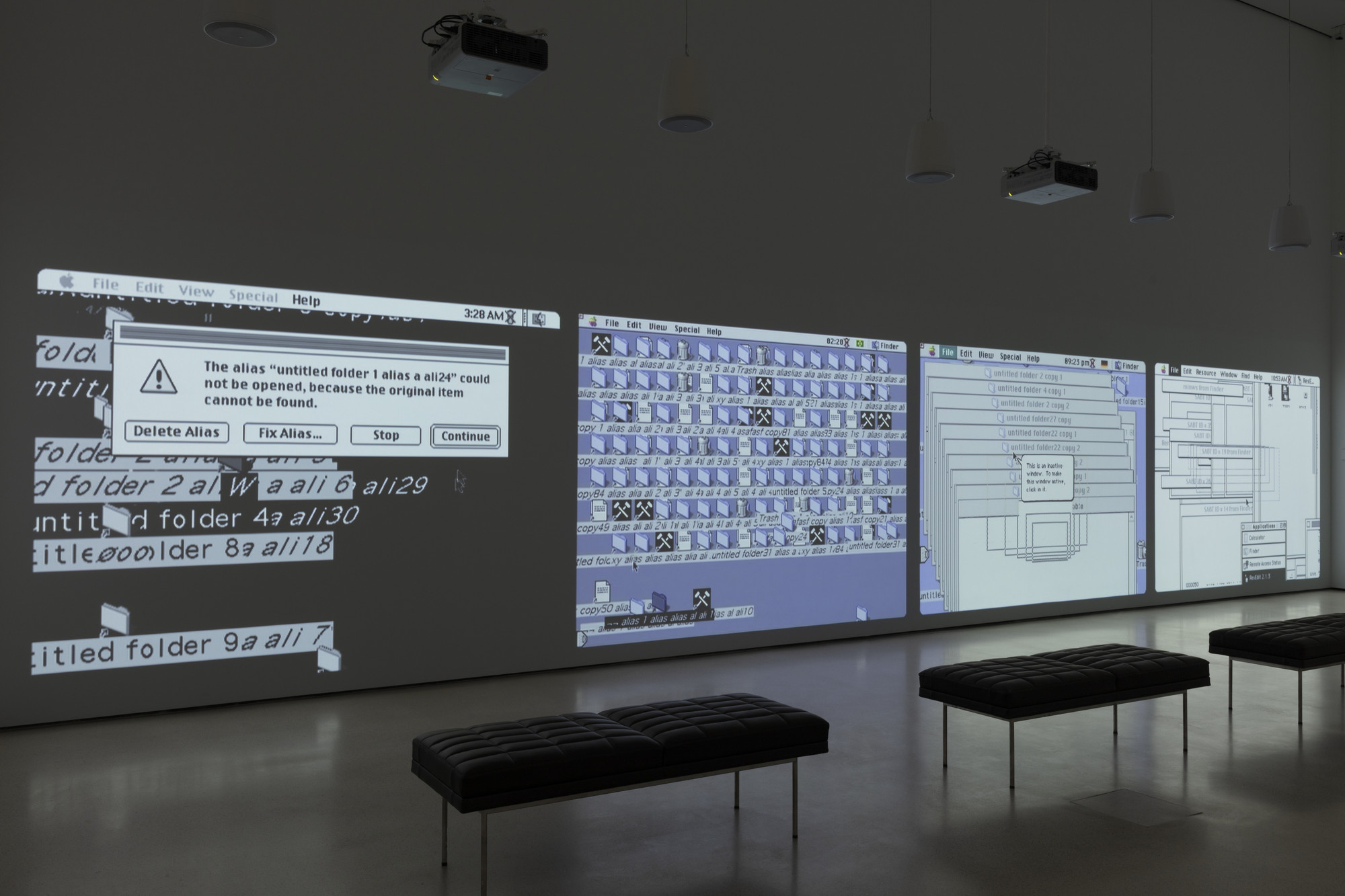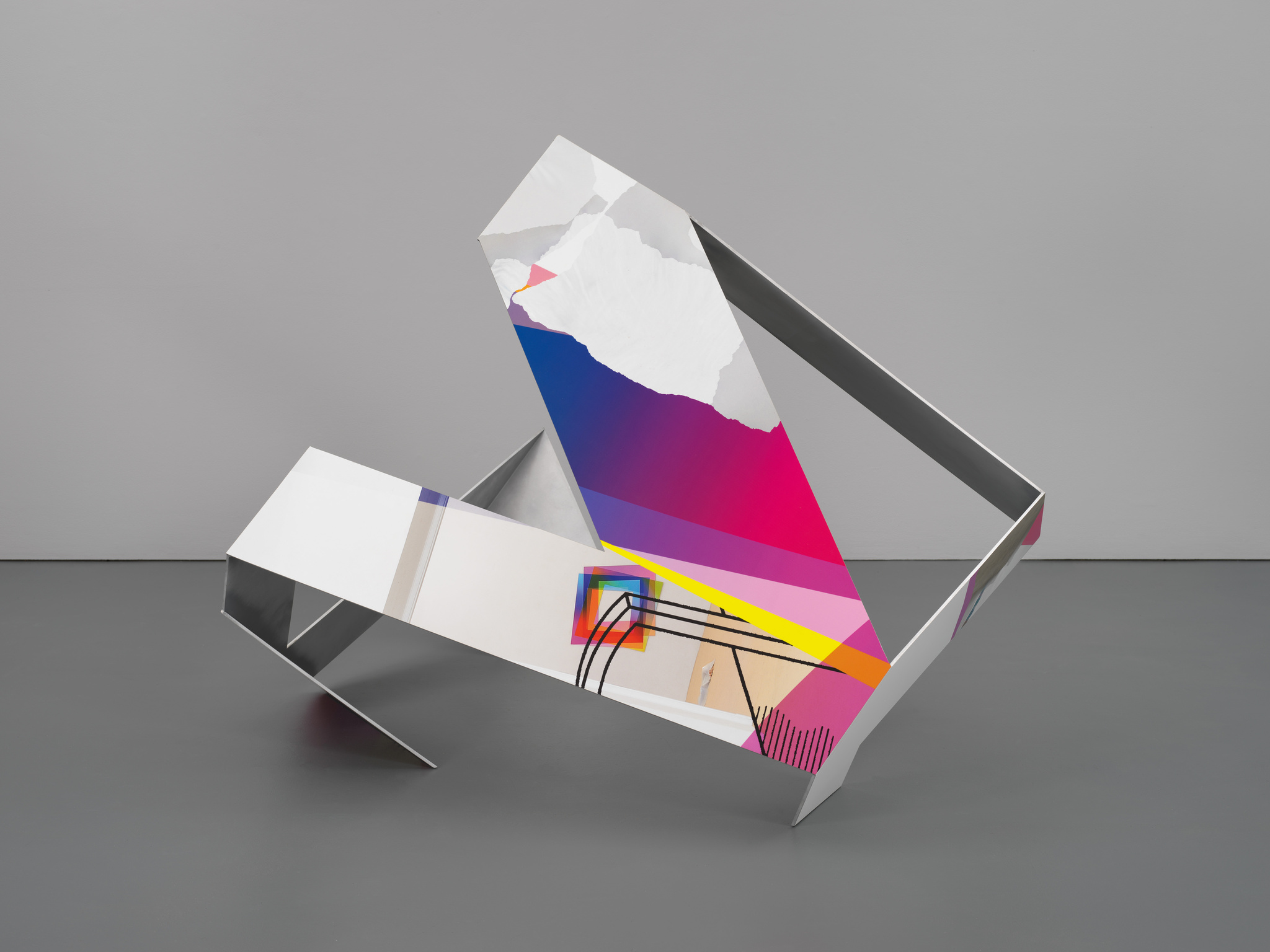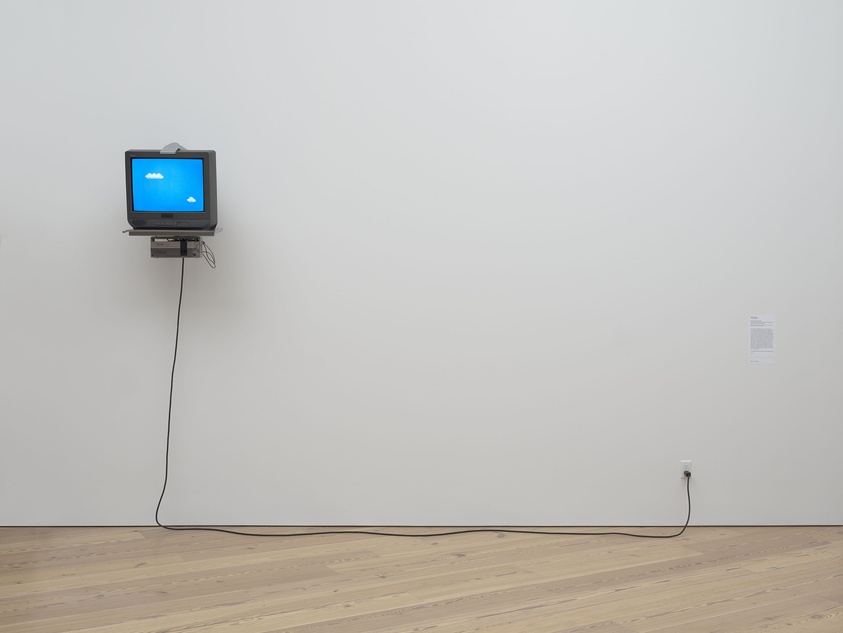Art History+
Post‑Internet Art vs Net Art: a clear timeline (1991–2025), key examples & how to tell them apart
On one screen, a hacked Nintendo cartridge drifts only clouds across a blue field; across town, a polished sculptural panel waits for a camera. That contrast is the fastest way into post‑internet art vs net art: one work is natively networked or code‑driven, the other assumes our networked culture and travels as images. In this guide you’ll get crisp definitions, a student‑friendly timeline, museum‑backed case studies, and pointers to view canonical pieces online. See also the Tate glossary’s overview of internet/net art for baseline terms: Tate — Internet Art.

The difference at a glance: post‑internet art vs net art
Net Art is created for and within online networks—often browser‑native. A work either intervenes in the network or has its behavior shaped by it (links, users, packets, uptime).
Post‑Internet Art is made within a culture saturated by the internet. Often physical objects or installations, these works assume network aesthetics and circulate as images, files, and memes.
- You’re likely looking at Net Art if the piece requires a connection or a browser to exist, or its logic is code/server‑side.
- You’re likely looking at Post‑Internet if the piece is a physical object or staged installation optimized for documentation and online circulation.
- Behavioral hint: Net Art acts on the network or is acted on by it; Post‑Internet work assumes the network as context and distribution channel.
Further reading: Rhizome’s Net Art framework (Net Art Anthology) and UCCA’s “Art Post‑Internet” curatorial statement.
What is Net Art? (definition, traits, origins)
Net Art (often styled “net.art”) emerged in the early 1990s alongside public access to the Web and earlier network experiments. In practice, it’s network‑native: built for browsers, servers, protocols, and users as co‑authors. Typical materials include HTML, JavaScript, server logs, chatrooms, forms, and packet flows; typical venues include URLs, mailing lists, mirrors, and emulators. The work tends to be live, mutable, and dependent on uptime.
Core traits (quick list)
- Network dependency: without a network, there’s no work.
- Browser or protocol native: pages, pop‑ups, frames, or APIs are the canvas.
- Code/markup aesthetics: source code, system dialogs, and glitches are visible formal elements.
- Distributed authorship: users, links, and mirrors meaningfully alter the piece.
- Institutional preservation: emulation and archiving are often part of the artwork’s life cycle.
Origins & institutions
Early communities coalesced around listservs and artist‑run servers; by 2001, the Whitney Museum launched artport to commission and host networked projects. Preservation has been advanced by Rhizome through born‑digital conservation and its Net Art Anthology, which reconstructs 100 works across the genre and links them to museum contexts.
Conceptually, Net Art inherits a revolutionary design ethos—bringing experiments out of the studio and into public systems—now recast as servers, standards, and social platforms.
Canonical Net Art case study #1 — Olia Lialina, My Boyfriend Came Back from the War (1996)
Lialina’s classic unfolds in black‑and‑white frames within frames. Clicking fragments the browser window into smaller panes of image and text; each click advances a minimal narrative while degrading legibility—an early use of HTML frames as dramaturgy. The slow, user‑paced loading is not a bug but the medium: the story breathes in latency, hyperlinks, and the viewer’s choices.
The work’s afterlife is unusually rich: countless tributes, remixes, and reconstructions trace how formats and browsers age. Rhizome’s curatorial and preservation writing helps students read it both as cinema and interface—an early proof that, for Net Art, the browser is the stage. Explore background and context via Rhizome’s anthology entry: Rhizome — MBCBFTW.
Canonical Net Art case study #2 — JODI, My%Desktop (2002)
JODI (Joan Heemskerk and Dirk Paesmans) turned the graphical user interface into a live performance. In My%Desktop, cascading system dialogs, errant mouse gestures, and scrambled file structures play across projected screens as if the computer itself were misbehaving. What looks like “glitch” is deliberate choreography of the desktop as stage.

The piece reframed “the desktop” as a performative surface and helped fix “glitch aesthetics” in contemporary art discourse. See the institutional record at MoMA — JODI, My%Desktop.
What is Post‑Internet Art? (definition, traits)
The phrase can mislead: post‑internet does not mean “after” the internet. Coined in the late 2000s vernacular and popularized across the 2010s, it names art made with consciousness of networks at every stage—from concept to production, branding, documentation, and circulation. Works often manifest as polished objects, videos, or installations, but they assume that their real audience will also meet them as images online.
Key traits you’ll see
- Object–image feedback loop: the studio object is staged for photos; those images are then altered, redistributed, and sometimes treated as works of their own.
- Design and corporate aesthetics: gradients, grids, product shots, and stock‑image cool—what you might call “UI logic in 3D.”
- Infrastructure awareness: cables, servers, logistics, and screens appear as subjects or materials.
- Posthuman bodies: avatars, filters, and composites foreground how identity is networked.
- The “poor image” debate: compression and recirculation change meaning and value as files travel.
Touchstone exhibition & lineage
A widely cited survey is UCCA’s 2014 exhibition Art Post‑Internet, which framed how artists work amid platforms, brands, and feeds. For a deeper dive into curatorial language and subthemes, consult the exhibition booklet: UCCA — Art Post‑Internet (booklet, PDF). The broader lineage includes Marisa Olson’s early theorization of “after the internet” practices and the discourse collected in Omar Kholeif’s editorial projects on art after the internet.
If the fusion of design, industry, and everyday life feels familiar, that’s because modernist DNA survives in today’s feeds: the Bauhaus emphasis on the fusion of art, craft, and industry still underpins the grid and the cool of corporate typography; and the zero degree of form resurfaces in screen‑age abstraction and icon design.
Post‑Internet case study #1 — Artie Vierkant, Image Objects (2011–ongoing)
Vierkant treats documentation as a creative engine. Sculptural panels and prints are installed, photographed, and then digitally altered; those altered images re‑enter circulation as autonomous works. In other words, the “real thing” and the “image of the thing” trade places, exposing how art now lives in feeds, PDFs, and press kits as much as in galleries.

For primary sources, see the artist’s widely circulated essay: “The Image Object Post‑Internet” (PDF), the Whitney collection entry for context, and an accessible conversation in Interview Magazine alongside a concise historiography via Artuner Insight.
Post‑Internet case study #2 — Cory Arcangel, Super Mario Clouds (2002)
Arcangel is a hinge between code‑based interventions and post‑internet circulation. The work exists as a gallery installation with modified console hardware and as endlessly recirculated images and clips online. Its minimal gesture—stripping a game to drifting clouds—became instantly legible in documentation, anticipating an era when artworks are designed to live as JPEGs and posts.

Collection context: Whitney — Super Mario Clouds.
Timeline for students: from early networks to post‑internet (1991–2025)
A concise net art timeline for students mapping the shift toward post‑internet practice. Use it alongside the case studies above.
- 1991–93: Public Web tools spread; early net.art gestures appear on listservs and artist‑run servers.
- 1994–98: JODI, Vuk Ćosić, VNS Matrix, and others establish the browser as a stage; frames, pop‑ups, and ASCII interventions define an initial vocabulary.
- 1996: Olia Lialina publishes My Boyfriend Came Back from the War—a touchstone of frames‑based hypernarrative.
- 1999–2001: Museums begin to commission and host networked projects; in 2001, the Whitney launches artport, signaling durable institutional support.
- 2002: JODI’s My%Desktop performs the user interface as theater; Cory Arcangel debuts Super Mario Clouds, soon an archetype of image‑ready documentation.
- 2006–08: Blogs, surf clubs, and early social platforms cultivate “internet art vs net art” debates around authorship, appropriation, and circulation.
- 2009–10: The term “post‑internet” stabilizes in discourse (e.g., online writing projects and editorial collections), describing art made amid platform logic rather than “after” it.
- 2011–13: Post‑internet consolidates in galleries and fairs; Artie Vierkant’s Image Objects articulate documentation as practice.
- 2014: UCCA’s Art Post‑Internet exhibition clarifies themes: branding aesthetics, infrastructure, and distribution as form.
- 2016–19: Rhizome publishes the Net Art Anthology; the New Museum’s The Art Happens Here brings emulation/preservation to the fore.
- 2020–22: Institutions expand born‑digital collecting; emulators and conservation toolkits become standard. NFT markets surge but remain a technology/market layer, not a definition of post‑internet art.
- 2023–25: Renewed attention to governance and infrastructure (from content moderation to cloud dependence) reframes both Net Art and Post‑Internet as histories of attention, logistics, and images.
How to tell them apart in the wild (decision tree + checklist)
Start here
Q1: Does the piece require a live network (browser, API, server) to exist as the work?
If yes → You’re likely looking at Net Art.
If no → Proceed.
Q2: Is the piece primarily a physical object or staged installation that assumes online circulation and documentation?
If yes → You’re likely looking at Post‑Internet.
If still unsure → Look for these signals.
Materials & behaviors checklist
- Material: code, markup, servers → Net Art. Aluminum, vinyl, dye‑sublimation prints, staged lighting → Post‑Internet.
- Site: URL, browser windows, mirrors → Net Art. White cube with photo‑ready walls → Post‑Internet.
- Behavior: users, uptime, and links alter the piece → Net Art. Documentation spawns new images/editions → Post‑Internet.
- Authorship: distributed, remix‑friendly → Net Art. Studio object with brand‑like visual identity → Post‑Internet.
- Afterlife: archived/emulated URLs → Net Art. Press images and feeds carry the work → Post‑Internet.
This quick map echoes Rhizome’s emphasis on works that act on networks (or are acted on by them) and UCCA’s framing of distribution and circulation as form.
Where to see Net Art & Post‑Internet Art (online & IRL)
Online (free and reputable)
- Whitney Artport — commissions and archives of internet‑native projects.
- Rhizome Net Art Anthology — 100‑work historical survey with essays and reconstructions.
On site (collections & exhibitions)
- Whitney Museum of American Art — long‑term engagement with software‑ and network‑based practices.
- MoMA — collection and exhibition history for interface‑driven works (e.g., JODI).
- New Museum — presented The Art Happens Here: Net Art’s Archival Poetics as part of Rhizome’s preservation program.
How modernism still shapes digital aesthetics
Today’s crisp interfaces and brand‑driven imagery inherit key modernist moves. The Bauhaus championed systems thinking, grid discipline, and typographic clarity for mass culture—see our primer on the grid & typography DNA. Suprematism’s radical reduction toward a zero degree of form echoes in icons, loaders, and minimalist UI. Both threads inform how artists navigate post‑internet art vs net art today.
Gallery (installations & documents)




FAQ
- What’s the simplest difference between Net Art and Post‑Internet Art?
- Net Art is network‑native art that acts on (or is acted on by) the network—often browser‑based. Post‑Internet Art is made in an internet‑saturated culture, typically as physical installations or objects designed to circulate as images. If you need a shortcut, use our decision tree above.
- Who popularized the term “post‑internet”?
- Artists and writers used the term in the late 2000s, with Marisa Olson frequently cited for framing “after the internet” practices. Curators and editors (notably Omar Kholeif) helped consolidate usage across the early 2010s by focusing on how conception, production, and circulation are shaped by platforms.
- Is Post‑Internet Art the same as “digital art” or NFTs?
- No. “Digital art” describes tools or media; NFTs describe a market/tech wrapper. Post‑Internet names an attitude toward networks (branding aesthetics, documentation, distribution). Some post‑internet works have been minted, but NFTs are neither necessary nor sufficient to define the category.
- Where can I view Net Art online for free?
- Start with major institutional platforms: Whitney Artport (commissions and archives) and the Rhizome Net Art Anthology (historical survey and reconstructions). Both provide canonical post‑internet art vs net art context for students.
- Why do scholars talk about the “poor image”?
- In Hito Steyerl’s influential essay “In Defense of the Poor Image,” the low‑res, compressed file is a political and cultural actor. As images lose quality while gaining speed and reach, they change how we value, access, and interpret art—central to post‑internet debates.
- What museums collect or exhibit these works?
- The Whitney Museum of American Art, MoMA, and the New Museum have all commissioned, collected, or exhibited network‑based practices and post‑internet objects. Check their online collection records and exhibition archives for current access.
- What are three must‑know examples for students?
- For Net Art: Olia Lialina’s My Boyfriend Came Back from the War and JODI’s My%Desktop. For Post‑Internet: Artie Vierkant’s Image Objects (with documentation as artwork). Cory Arcangel’s Super Mario Clouds bridges both discussions.
Explore more on Artoholica
If you want a deeper grounding in the modernist DNA behind today’s digital aesthetics—grids, abstraction, and typographic clarity—dip into our guides in the Art History+ section. These movements shaped the visual language that Net Art and Post‑Internet artists still twist and remix today. Browse the full index: Art History+ index.
References & Further Reading
- Tate — Internet Art (glossary): clear baseline definitions and scope.
- UCCA — Art Post‑Internet booklet (PDF): curatorial framing of themes and stakes.
- Rhizome — Lialina, MBCBFTW: project context and preservation notes.
- MoMA — JODI, My%Desktop: installation record and images.
- Whitney — Cory Arcangel, Super Mario Clouds: collection entry.
- Artie Vierkant — “The Image Object Post‑Internet” (PDF): primary artist text.
- Interview Magazine — Artists at Work: Artie Vierkant: accessible interview.
- Artuner Insight — “Image Objects: A Brief History”: succinct historiography.
- e‑flux — Hito Steyerl, “In Defense of the Poor Image”: essential context for circulation and value.
Image credits
- Whitney Museum of American Art: Arcangel images © Cory Arcangel; installation photos © Ron Amstutz; courtesy of the artist.
- MoMA: JODI installation view — Photograph by John Wronn.
- Whitney (Vierkant): © Artie Vierkant.
- Rhizome: contextual materials referenced in‑text.

0 comentários